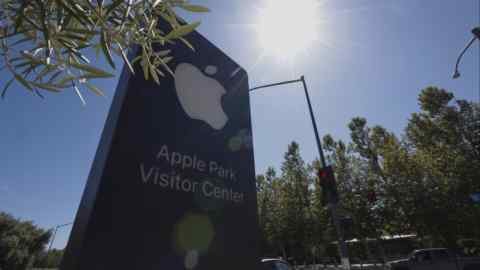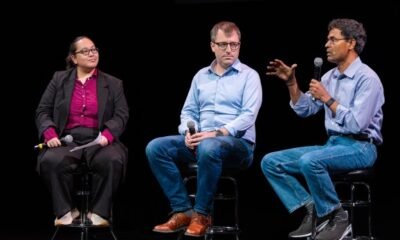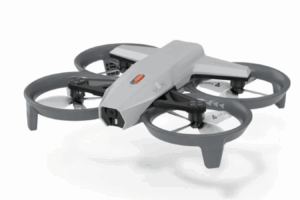The Trump administration has called on Silicon Valley’s defence, space and energy start-ups to help restore America’s industrial base and reduce its trade deficit, as it prepares to spend billions of dollars on high-tech military hardware.
“A country without robust manufacturing is hardly a country at all,” US trade representative Jamieson Greer told the Reindustrialize conference in Detroit, where hundreds of start-ups had gathered to pitch their wares to venture capitalists and government officials.
“We have a $1.2tn trade deficit in goods . . . and it is financed by the largest debt burden of any country ever,” Greer said. “If you fail to correct this status quo, it means that we’re all just complicit in the loss of our industrial base, even more than we’ve already lost it.”
In his first major speech for months, Greer claimed that broad tariffs imposed by the White House on the US’s trading partners were helping reshore manufacturing and had already led General Motors to invest $4bn in domestic output and move the production of two models made in Mexico back to the US.
The US trade ambassador’s comments come just weeks after the passing of President Donald Trump’s flagship tax and spending bill, which was cheered by start-ups for increasing funding for defence technology, nuclear power and artificial intelligence.
The bill allocated $25bn to fund the US’s planned “Golden Dome” missile-defence system and set aside almost $30bn for shipbuilding and naval tech, among other projects — which is expected to benefit start-ups along with traditional defence players.
The president has separately signed a series of executive orders aimed at speeding up procurement across government.
Investors and start-ups gathered in Detroit were enthusiastic. “I’ve seen a real difference . . . particularly with the leadership in the Pentagon now, a real willingness to want to support industry, to support the defence sector, and to work with non-traditional . . . companies,” said Christian Garrett, an investor at 137 Ventures, which has backed groups such as SpaceX, Palantir and Anduril.
Louis Mosley, head of software company and government contractor Palantir’s UK arm, who is presenting at the conference in Detroit said: “The animal spirits, the momentum, are extremely strong.”
“The geopolitical environment has darkened significantly, and . . . you’re starting to see big banks as well change their [environmental, social, and governance] policies, which historically have prevented them from supporting a lot of activity in defence,” Mosley added.
A series of smaller start-ups have also descended on Detroit, hoping to benefit from the boost in defence spending and the administration’s pledge to invest in next-generation technology.
“The [US] Marine Corps reached out to us,” said Billy Thalheimer, co-founder of Regent, a company founded to build commercial sea gliders in the US that unveiled a new defence arm on Wednesday,
The company, backed by Peter Thiel’s Founders Fund, unveiled a new defence arm on Wednesday, which it said would build gliders to “support the US and its allies in countering the growing maritime national threat posed by China in the Indo-Pacific region”.
The threat of a looming conflict between world powers has led governments worldwide to seek the assistance of such fledgling tech groups, said Greg Bernstein, a venture capitalist who co-founded the Reindustrialize conference.
“The alarm bells have been appropriately raised as it relates to the readiness of the United States,” he said. “Our munitions are so low, we can’t survive a sustained logistical campaign . . . that is now way out in the open for everybody to discuss.”
Greer also urged American allies to support the rebuilding of America’s industrial base “if they expect that industrial base to come to their defence in times of crisis and war” and reiterated that the administration would offer relief from tariffs for countries that helped with that effort.

























